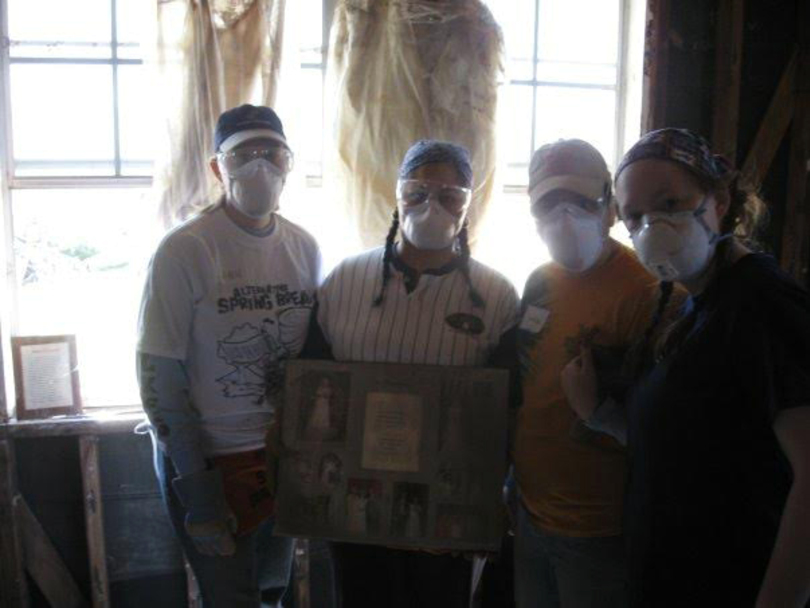SU faculty reflect on 10 years since Hurricane Katrina, New Orleans’ recovery
As a native New Yorker, Valerie Martinez has seen first-hand from 9/11 the devastation that fire can bring. But in 2007, two years after Hurricane Katrina, she experienced the complete opposite: devastation from water.
Martinez, who is currently the associate director for mentoring programs and diversity education at Syracuse University, volunteered through her alma mater, Wilkes University, to help recover and rebuild parts of New Orleans after Hurricane Katrina hit. Ten years later, the city is still recovering in many ways.
Martinez, as well as a majority of the other 35 people in her volunteer group, had never visited New Orleans before Hurricane Katrina, but when they landed, the signs of disaster were everywhere.
“It was devastation. It was heartbreak,” Martinez said. “We could see what we assumed were parks and healthy-looking trees were now marshes and swamp lands… Houses were crumpled, which is the best way I can put it, you know like you crumple a piece of paper — they were literally crumpled.”
On the sides of taller buildings, Martinez added, one could see watermarks, showing how high the water had been at one point.
“You would look up at some of these buildings that are considered high-rises and you see the watermarks of where the water was and you just think, ‘I’m 5’4” and it was way above me,’ and you don’t even know what water like that looks like,” Martinez said.
Sean O’Keefe, who had started his tenure as chancellor of Louisiana State University just six months before Hurricane Katrina hit, said the university’s campus in Baton Rouge at the time was “mayhem.”

Courtesy of Valerie Martinez
Since all of the hospitals in the area were without power and LSU was one of the only places still running, the entire basketball arena was converted into a medical center to help treat people injured during the storm.
O’Keefe, now a university professor at SU, said he most vividly remembers all of the students who volunteered in the medical facility.
“Whether it was 2 p.m. or 2 a.m., hundreds of students would be waiting to help volunteer,” O’Keefe said. “No need to ask them or anything, they just came. It was inspiring, it really was.”
O’Keefe said he’s seen a very different New Orleans 10 years after the devastation.
“Ten years ago, New Orleans was almost irreparable. The quality of education was disastrous… The criminal record was awful,” O’Keefe said. “The storm washed everything away, creating a rebirth of the city. In some cases this made New Orleans better, in some cases not so much.”
Despite rebuilding and recovering parts of the city, New Orleans’ economy is not as strong as it was before the storm.
Carl Schramm, also a university professor at SU, said he believes New Orleans’ recovery was handled very poorly, but added that it is not clear to him what the best recovery method for the city is.
One of the reasons why the economy is not as strong is the fact that the area’s population has decreased since the storm. New Orleans now has only about 90 percent of the population it did before Hurricane Katrina.
“The future of New Orleans is like that of any city,” Schramm said. “It’s tied to the growth of the economy, so if there is slow growth then the recovery’s not going to be good.”
Some people, like Martinez, are more confident that New Orleans will come back stronger than it was before the disaster.
The symbol of the New Orleans Saints is the fleur de lis, and the fleur de lis can be found all over New Orleans. The symbol, Martinez said, means rebirth and rejuvenation.
“It’s ironic and so apropos at the same time,” Martinez said. “No matter what happens down there, they rebuild and they restore because they have this amazing spirit of rejuvenation that nothing’s going to hold them down.”
Published on September 2, 2015 at 11:31 pm
Contact Sara: smswann@syr.edu | @saramswann







